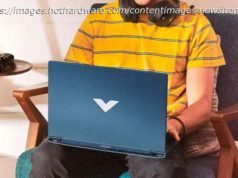Android 12 is just around the corner. With its second developer preview here, we take a look at which Android 12 features could debut soon.
Update: April 21, 2021 (05:00 PM ET): We’ve added more Android 12 features spotted in the third developer preview. Read on for more! Android 12 has hit its third major milestone. Google has now released the third Android 12 developer preview to the public, giving us access to a fresh new build of the OS. As with the previous developer previews, these are very early versions of the software, so they are not ready for public use. Google is improving and introducing a host of facets in its latest iteration of Android. Tweaks to media handling and notification support, improvements to privacy and haptic feedback, and more polished notifications UI all make the cut. We’re barely brushing the surface here. For a deeper dive detailing these confirmed Android 12 features and more, read on! Don’t miss: Android 12 developer preview hands-on: Lots of little changes In stock Android 11, if you want to share your current Wi-Fi connection with someone, you can create a QR code easily. However, in Android 12, you can avoid the barcode scanning and just hit the “Nearby” button you see underneath the QR code in the image above. That will use Android’s Nearby Share feature to transmit the Wi-Fi credentials to whomever you like. While scanning the QR code is pretty easy, this new feature allows you to share the connection info with multiple people without handing your phone around for everyone to scan. That’s definitely more convenient! With a Pixel device, if you capture a screenshot, you are easily able to markup that shot with paintbrush-like tools. With Android 12, though, you can add text, Emoji, and stickers to your screenshots using the same tool. This isn’t a revolutionary change, but it might prevent folks from needing a third-party app to do the same thing. Android 12’s rumored wallpaper-based theming system has been switched on by a developer. Initially rumored in late January, the feature uses the wallpaper’s predominant color to set the hue of system elements. For instance, if you apply a wallpaper of orange bokeh, UI elements will adopt a shade of peach. Screenshots suggest that the colors are applied to Android 12’s notification shade, settings menus, and lock screen. It’s unclear if this feature will make it to Android 12’s final cut, but it seems pretty advanced and well-developed for Google to drop it. That said, Google hid the feature for a reason. While the feature is present on Android 12 DP1, there’s no telling if it will make the final cut. Notably, the screenshots also lack other rumored Android 12 UI tweaks, including the Conversation section and squircle icons. The days of JPEG as the de facto compressed image format on mobile are numbered. Android 12 introduces support for AVIF — an image format that promises improved image quality over JPEG without the penalty of larger file sizes. The format makes use of the open-source video codec AV1, which was first introduced to Android 10. Although HEVC is growing in popularity, the video compression standard isn’t supported by all apps. Now, Google is set to introduce a transcoding layer to Android 12 that will let unsupported apps also take advantage of video compression. Video capture apps that don’t support HEVC can now request Android 12 to transcode that file in AVC — a more available video compression format. Read more: The best camera phones you can buy Google notes that this is a stop-gap solution and urges developers to include HEVC support for their apps. The performance of this feature is also largely dependent on a device’s processing power. For instance, a one-minute 1080p video takes nine seconds to transcode on a Pixel 4, suggesting that it may not be suitable for budget devices. Still, the feature will be available for all Android 12 devices with video capture capabilities. Google is allowing developers to mate haptic feedback patterns with audio in Android 12. The strength and duration of vibrations are derived from audio cues, which adds a more immersive layer to media playback or alerts. “For example, a video calling app could use custom ringtones to identify the caller through haptic feedback, or you could simulate rough terrain in a racing game,” explains Google. Android 12 is bringing support for SameSite cookie behaviors to WebView. The SameSite attribute allows developers to declare if a cookie should be limited to a specific website. This addition should improve Android 12’s handling of cookies across the OS and various apps. Notably, major Android browsers already support the attribute. Google is giving users more control over rich media through the keyboard, clipboard, and drag and drop. A new API will let users insert and move media from any of these sources. Supported formats will include “plain and styled text to markup, images, videos, audio files, and more,” per Google. For users, it should speed up the process of sharing files or styled text to others or across apps.
Start
United States
USA — IT Android 12 features: Everything confirmed and rumored so far (Updated: Apr.21)






